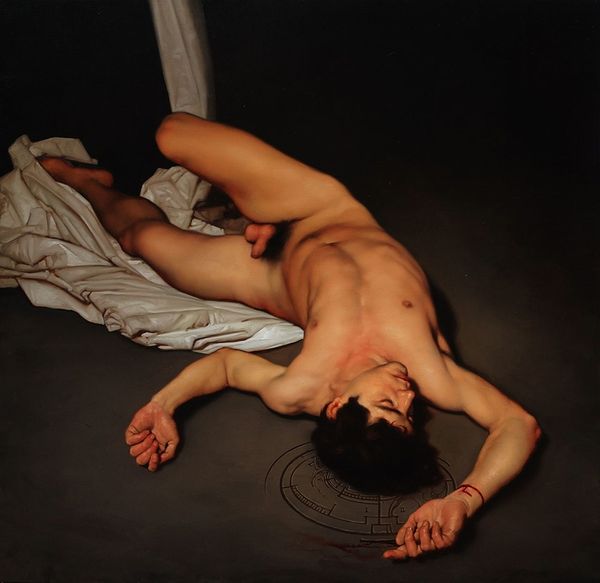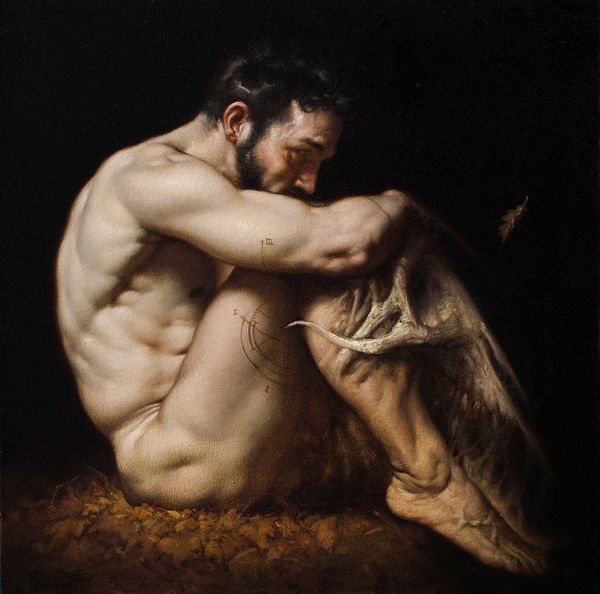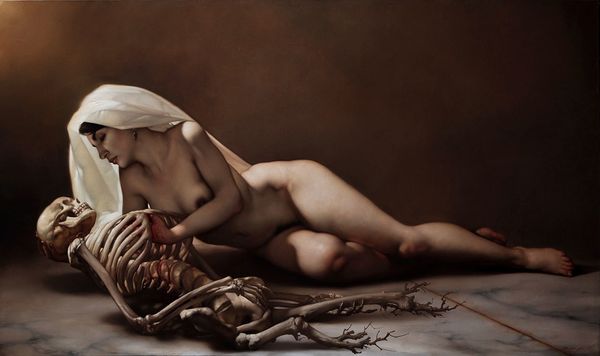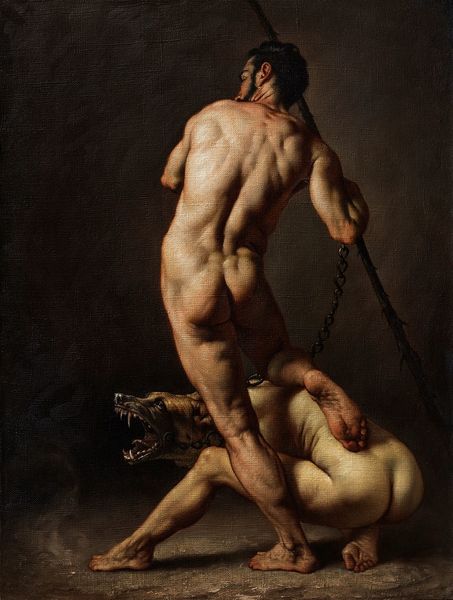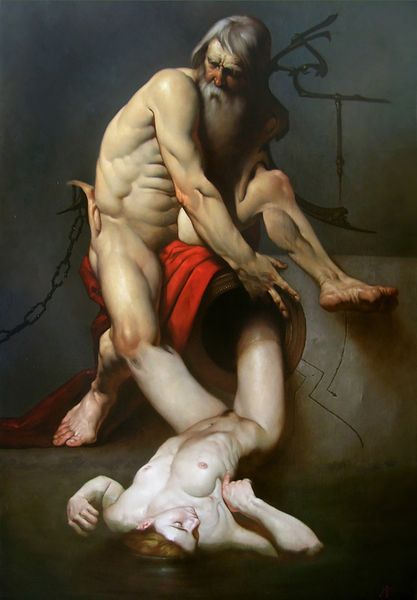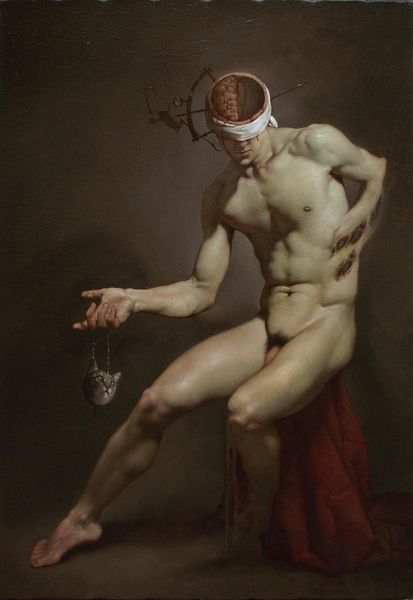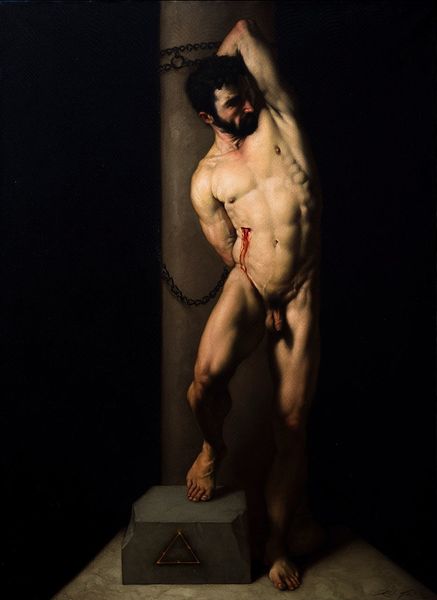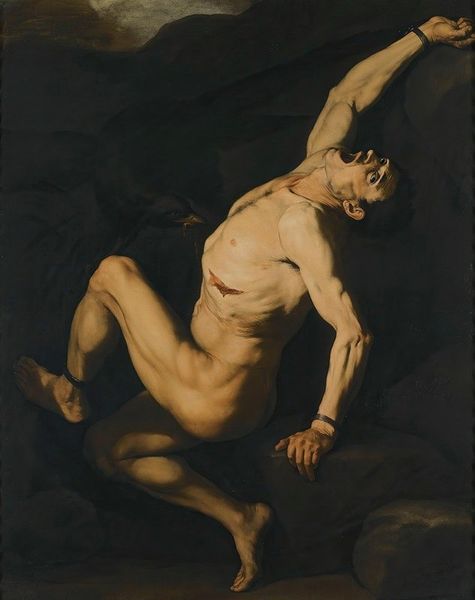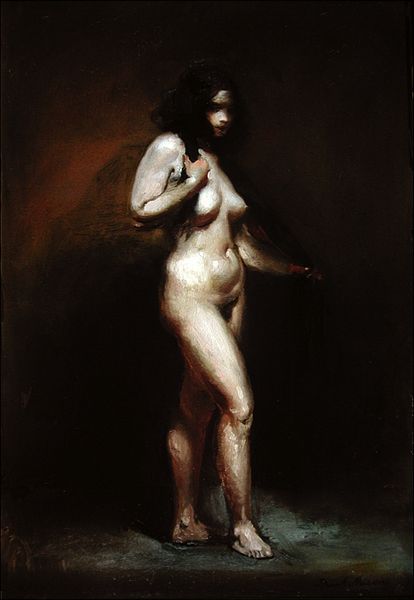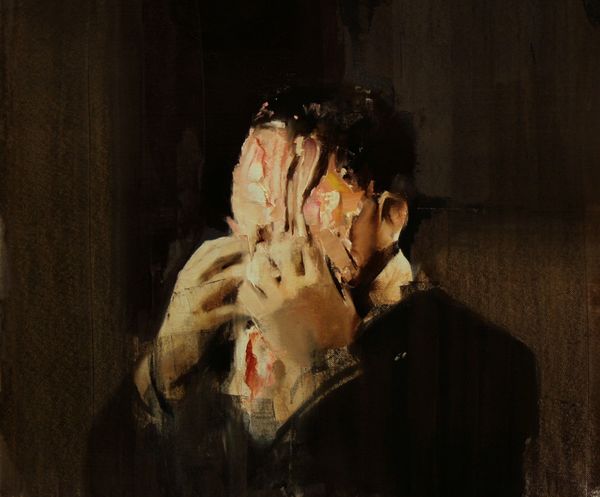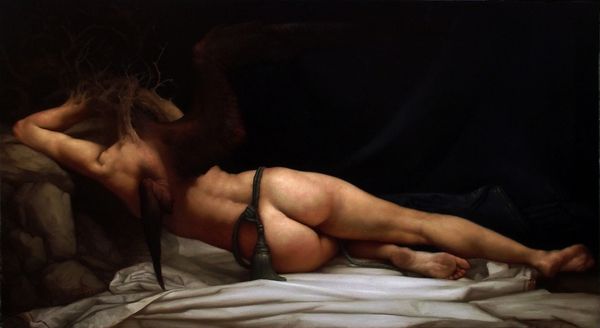
Copyright: Modern Artists: Artvee
Curator: "Notturno," painted in 2012 by Roberto Ferri, rendered in oil paint. What sensations does it stir in you at first glance? Editor: A visceral feeling of vulnerability and struggle. The chiaroscuro creates this intense spotlight on the figure, yet the face is obscured, almost erased, contributing to the sense of anonymity in suffering. Curator: Chiaroscuro certainly dominates, hearkening back to Caravaggio. And observe how the symbolism embedded in this visual language allows Ferri to tap into archetypes of pain and transcendence, prevalent throughout Western art history. The distorted mouth, the bound hands - echoes of martyrdom and sacrifice. Editor: Precisely, and Ferri situates this figure outside any specific historical event, allowing viewers to project a range of contemporary anxieties onto it. I see reflections of body politics, maybe the silent endurance of marginalized bodies, caught within structures of power and oppression. The wound and decay are evocative. Curator: The grotesque, without being overtly graphic, speaks to a deeper psychological unease. Consider the obscured visage: Is it denial, the suppression of identity, or does it serve a broader function? What's fascinating is the suggestion of something ineffable—a realm where the corporeal and spiritual intersect. This form of dream-horror evokes intense feeling through its use of Christian symbolism. Editor: And that merging of styles is powerful. Elements of surrealism creep into the edges of the hyperreal figuration, dissolving conventional boundaries. It almost acts as a visual metaphor for the breakdown of societal constructs around identity and the body, doesn't it? Who controls, whose is that body in art, life? It also asks if power dynamics themselves are on the verge of decay. Curator: A very fitting insight indeed. This fusion reinforces his post-modern appropriation of history. These timeless symbolic layers allow Ferri to transcend the purely narrative to create a statement on what exactly makes us vulnerable, or not. Editor: Yes, and the artist deftly confronts our expectations about whose suffering matters. Thank you, as I hadn't really looked closely until we dove into this. Curator: Likewise. Reflecting on Ferri's art gives me hope that humans will be open to looking closer to finding new symbols from the ruins of the past.
Comments
No comments
Be the first to comment and join the conversation on the ultimate creative platform.

